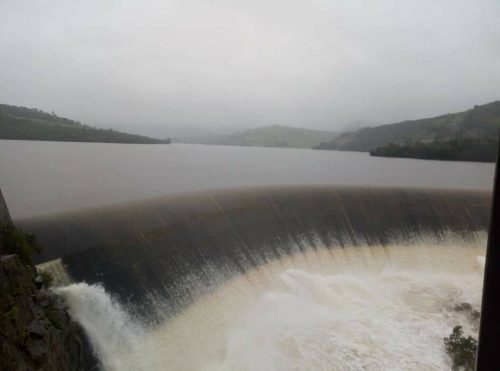By Ncaba Ntshakala
The Ministry of Natural Resources and Energy has reported a slight decrease in dam levels across Eswatini, attributing the decline to the dry winter season and recent hot weather.
Mnjoli and Maguga dams are currently holding at 76%, while Lubovane is slightly higher at 79%. Hawane Dam, a key source of potable water, is half-full at 50%, and Luphohlo Dam, critical for hydropower, stands at a concerning 32%.
The Ministry remains optimistic that these levels will improve as the rainy season approaches, but it has strongly urged all residents and industries to conserve water in the meantime.
RELATED: Mpakeni Dam construction: Bids submission deadline extended
Sikelela Khoza, the Ministry’s Communications Officer, emphasized the importance of water conservation during this dry spell.
He highlighted that this is the second warning from the Ministry regarding the falling water levels, following an earlier report that revealed an even more alarming situation.
In a prior update, the Ministry reported that Hawane Dam had dropped to 28.75% capacity, while Luphohlo Dam stood at 55%.
These declines raised serious concerns about water security and hydropower generation in the country, prompting heightened efforts to promote conservation.
While the Maguga and Mnjoli dams, which support irrigation, have not experienced drastic reductions, Khoza warned that continued drops could affect agricultural productivity.
The Ministry pointed out that if the current trend persists, the effects could ripple through various sectors, impacting farming, household water supply, and electricity generation.

The Eswatini Electricity Company (EEC) has also expressed concern, warning that prolonged low water levels could disrupt hydroelectric power generation.
In a recent statement, EEC cautioned that if the dam levels continue to drop, it may need to halt power production to protect critical equipment.
The company called on residents to adopt energy-saving measures, including switching off geysers during peak hours – 6:00 a.m. to 9:00 a.m. and 5:00 p.m. to 7:00 p.m. – to reduce strain on the national grid.
EEC stressed that these measures, while simple, could make a significant difference in maintaining power supply.
The Eswatini Water Services Corporation (EWSC) has joined the call for conservation, issuing a public alert regarding the risk of water shortages.
The corporation noted that the dry conditions have already resulted in reduced water levels in rivers and reservoirs, posing a potential threat to steady water supply.
RELATED: Significant decline in water levels in Eswatini’s dams
EWSC urged the public to adopt responsible water usage practices, such as fixing leaks promptly and reducing unnecessary water consumption.
“Water conservation is not just an immediate necessity but a long-term responsibility,” read the EWSC statement.
“By taking proactive steps, we can help preserve our water supply and prevent future shortages.
” The corporation acknowledged the increasing pressure on natural water sources due to climate change and warned that Eswatini, like many other countries, must adapt to these new environmental realities.

As the country awaits the arrival of the rainy season, the Ministry of Natural Resources and Energy remains hopeful that dam levels will recover.
However, Khoza expressed that conservation remains essential in both the short and long term.
“We encourage everyone to use water sparingly and be mindful of their consumption, especially in these dry conditions,” he said


